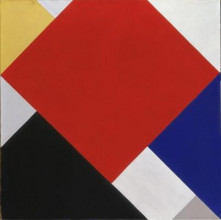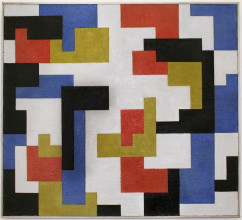100 years de stijl
Theme
2017 marks a hundred years since the founding of De Stijl, a legendary group of artists and architects that revolved around Theo van Doesburg, Piet Mondrian and Gerrit Rietveld. Museums throughout the Netherlands will be celebrating this special year. In a series of three presentations throughout 2017, the Stedelijk will focus on unexpected sides of De Stijl, such as an exhibit highlighting the work of De Stijl defector Chris Beekman. The Stedelijk also pays attention to connections with the Russian Revolution, which also occurred in 1917.
The inaugural issue of the magazine De Stijl in October 1917. The journal provided the artists, designers and architects with a platform for their pioneering ideas: by radically redefining art they hoped to create a world of total harmony, and to unify art and life. De Stijl’s theories of colour and space led to a revolutionary language of pure abstraction intended to express that harmony.
The Stedelijk Museum acquired a large collection of work by De Stijl and, by staging several key exhibitions, including a major survey in 1951 curated by former director Willem Sandberg that travelled to MoMA in New York, was the impetus behind the international recognition of the movement.
Although disbanded in 1931, De Stijl is no less influential today, embraced by artists, designers and architects as an inspiration, or rejected as an inexorable certainty.


